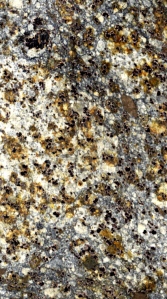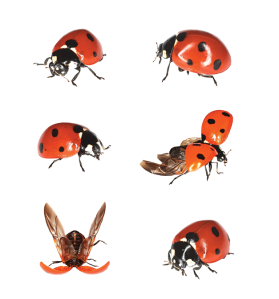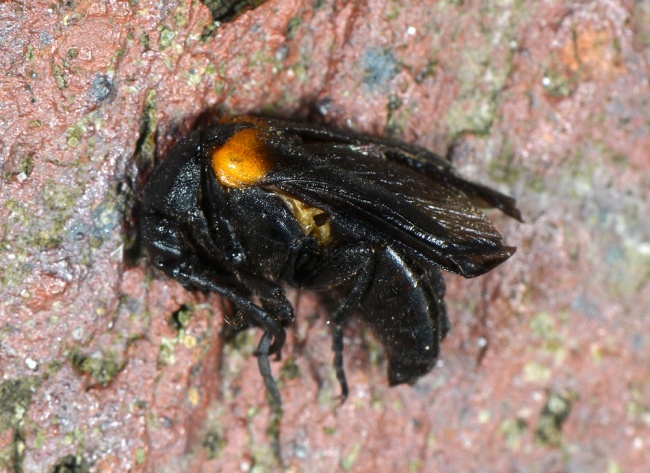 Two hundred years ago today, at 9 o’clock in the morning on 10 September 1813, the residents of County Limerick in Ireland had a bit of a surprise. They heard loud bangs as a shower of meteorites fell to ground. More than 48 kilograms of rock had just arrived from space!
Two hundred years ago today, at 9 o’clock in the morning on 10 September 1813, the residents of County Limerick in Ireland had a bit of a surprise. They heard loud bangs as a shower of meteorites fell to ground. More than 48 kilograms of rock had just arrived from space!
More specifically, it had come from the asteroid belt, a band of rocky debris that orbits the Sun between Mars and Jupiter. Collisions can knock asteroids out of orbit, and occasionally send them hurtling on a collision course with Earth. Small fragments burn up in the Earth’s atmosphere, forming meteors or ‘shooting stars’. Larger pieces fall to the Earth’s surface, and these are known as meteorites.
 The meteorite that fell over County Limerick broke into pieces, and the one in our collection is the second largest. It weighs nearly 8.5 kilograms, and landed near the village of Faha on the estates of the Blakeney family. The Rev. Robert Blakeney was an Oxford graduate whose ministry was in the parish of South Elm in Somerset. The meteorite was perhaps found in the rectory after his death, as it was the new rector’s younger brother, the Rev. John W. Griffith, who presented it to the University of Oxford in 1825.
The meteorite that fell over County Limerick broke into pieces, and the one in our collection is the second largest. It weighs nearly 8.5 kilograms, and landed near the village of Faha on the estates of the Blakeney family. The Rev. Robert Blakeney was an Oxford graduate whose ministry was in the parish of South Elm in Somerset. The meteorite was perhaps found in the rectory after his death, as it was the new rector’s younger brother, the Rev. John W. Griffith, who presented it to the University of Oxford in 1825.
The outer crust of the meteorite is smooth and dark where the surface melted as it fell through the Earth’s atmosphere. The inside is a pale grey rock. Look closely at the photograph to the left, and you can see flecks of metal – nickel iron alloy – and tiny rounded crystalline grains called chondrules. The picture shows an area about 35 mm x 20 mm.
The chondrules show that the Limerick belongs to a class of stony meteorites called ‘chondrites’. At around 4.55 billion years old, chondrite meteorites are some of the oldest materials in the Solar System. They give researchers important clues about how the planets – including the Earth – originally formed.
To celebrate the 200th anniversary of the arrival on Earth of the Limerick meteorite, we are exhibiting it in ‘Presenting…’, a changing display of treasures from the Museum’s collection. Although the main Museum is closed, this display can be seen by visitors on the way through to the Pitt Rivers Museum, so do come and have a look. It might be the oldest thing you’ll ever see!
Photography: Dara Lohnes
Monica T. Price, Head of Earth Collections



 As I explained
As I explained 

 Two hundred years ago today, at 9 o’clock in the morning on 10 September 1813, the residents of County Limerick in Ireland had a bit of a surprise. They heard loud bangs as a shower of meteorites fell to ground. More than 48 kilograms of rock had just arrived from space!
Two hundred years ago today, at 9 o’clock in the morning on 10 September 1813, the residents of County Limerick in Ireland had a bit of a surprise. They heard loud bangs as a shower of meteorites fell to ground. More than 48 kilograms of rock had just arrived from space! The meteorite that fell over County Limerick broke into pieces, and the one in our collection is the second largest. It weighs nearly 8.5 kilograms, and landed near the village of Faha on the estates of the Blakeney family. The Rev. Robert Blakeney was an Oxford graduate whose ministry was in the parish of South Elm in Somerset. The meteorite was perhaps found in the rectory after his death, as it was the new rector’s younger brother, the Rev. John W. Griffith, who presented it to the University of Oxford in 1825.
The meteorite that fell over County Limerick broke into pieces, and the one in our collection is the second largest. It weighs nearly 8.5 kilograms, and landed near the village of Faha on the estates of the Blakeney family. The Rev. Robert Blakeney was an Oxford graduate whose ministry was in the parish of South Elm in Somerset. The meteorite was perhaps found in the rectory after his death, as it was the new rector’s younger brother, the Rev. John W. Griffith, who presented it to the University of Oxford in 1825.
 The 7-spot has been familiar to farmers and gardeners throughout history as a brightly-coloured guardian against greenfly, and it’s from this that ladybirds get their slightly odd name. Bright red in colour (matching the cloak of the virgin Mary in early biblical illustrations) and with seven black spots recalling the seven sorrows of Mary, these tiny predators were clearly a gift from the gods to farmers suffering from aphids on their crops, and so they became known as ‘Our Lady’s birds’, which became shortened to ‘ladybirds’.
The 7-spot has been familiar to farmers and gardeners throughout history as a brightly-coloured guardian against greenfly, and it’s from this that ladybirds get their slightly odd name. Bright red in colour (matching the cloak of the virgin Mary in early biblical illustrations) and with seven black spots recalling the seven sorrows of Mary, these tiny predators were clearly a gift from the gods to farmers suffering from aphids on their crops, and so they became known as ‘Our Lady’s birds’, which became shortened to ‘ladybirds’.

 Above you can see a 3D anaglyph (stereoscopic) photo of the type specimen of Barrandia bianularis, a trilobite that lived around 464 to 467 million years ago. It appears on the website in 3D when viewed using cyan-red viewing glasses. Have a look
Above you can see a 3D anaglyph (stereoscopic) photo of the type specimen of Barrandia bianularis, a trilobite that lived around 464 to 467 million years ago. It appears on the website in 3D when viewed using cyan-red viewing glasses. Have a look 


